Balinese Wedding Ceremony
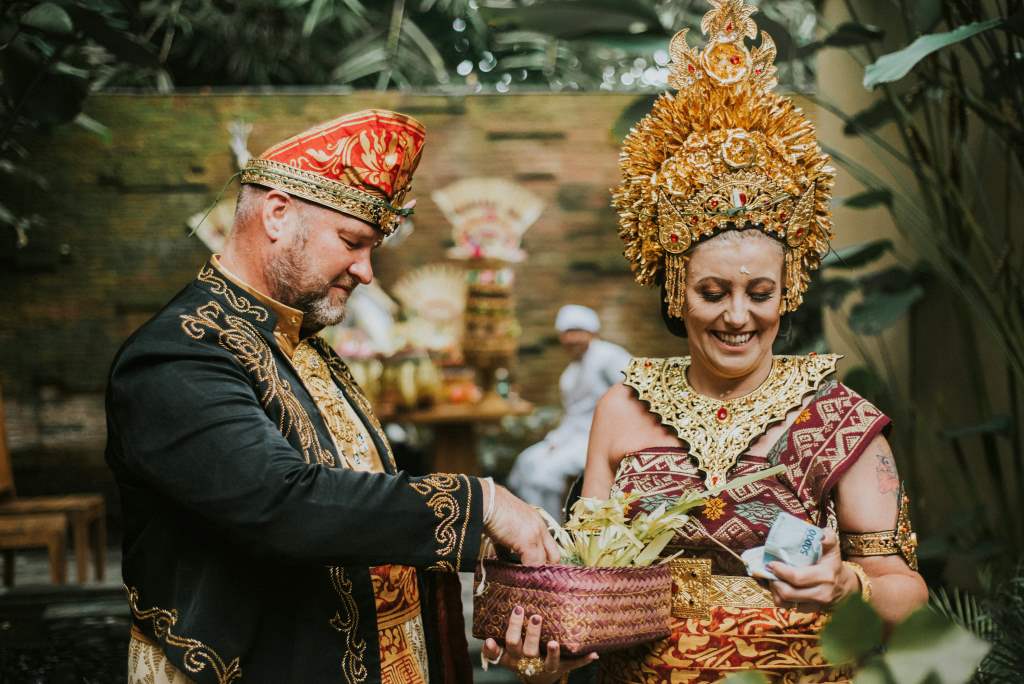
BALINESE WEDDING CEREMONY IS HINDU RITUAL MARRIAGE CEREMONY BASED ON CULTURE AND CUSTOMS BY PERFORM SEVERAL STEP WEDDING PROCESSION
The Balinese wedding ceremony is one of the most important and culturally rich events in Balinese society. Rooted in Hinduism and steeped in centuries of tradition, a Balinese wedding is not just a union between two individuals but also a union of families, communities, and spiritual elements. Each aspect of the wedding is symbolic and has deep cultural significance, reflecting the harmony between humans, nature, and the divine.
In this article, we will explore the meaning behind Balinese weddings, their importance to society, the traditional process of a Balinese Hindu wedding, the unique styles and customs associated with these ceremonies, and how different castes in Bali experience weddings.
1. Balinese Wedding Meaning
In Bali, a wedding is more than just a celebration of love; it is a sacred ritual that brings together two souls in union, following the teachings of Balinese Hinduism. The marriage ceremony, known as pawiwahan, is a binding contract between the couple and a way to honor the gods and ancestors.
Balinese Hinduism is rooted in the belief of Tri Hita Karana, which emphasizes the harmonious relationship between three aspects: humans, nature, and the gods. In the context of a wedding, this means that the marriage is not only a commitment between two people but also an agreement that involves divine blessings, ancestral approval, and the well-being of the couple’s families and communities.
Weddings in Bali carry a deeper spiritual meaning, as they are seen as the continuation of the family’s lineage, the community’s social structure, and the cosmic balance between humans and the divine. The couple’s union is blessed by the gods, allowing them to continue their roles in society and ensuring the smooth continuation of their families’ spiritual and earthly duties.
2. Balinese Wedding’s Importance to Society
In Balinese society, weddings play an integral role in preserving the family unit, community ties, and religious practices. A wedding is not only an event for the bride and groom, but it also involves both families, friends, and the entire village. The ceremony solidifies the bonds between two families and extends these connections to the wider community.
For the Balinese, marriage is considered a social and religious duty. It is through marriage that individuals fulfill their responsibilities to their families and society by contributing to the continuation of the family lineage. In Balinese culture, remaining unmarried is often viewed as failing to complete one’s duty, as marriage is essential for maintaining the balance of the family’s spiritual obligations.
Weddings also strengthen the relationships within the community. The event is often communal, with neighbors, relatives, and friends coming together to help with the preparations and share in the celebration. It is a way to demonstrate unity and solidarity within the village, ensuring that all members of the community are interconnected and supportive of one another.
Moreover, the wedding ceremony itself is a religious event, as it involves prayers, offerings, and rituals that invoke the blessings of the gods and ancestors. This emphasizes the role of religion in every aspect of Balinese life, where even personal milestones like weddings are deeply intertwined with the spiritual practices of the community.
3. Balinese Hindu Wedding Traditional Process
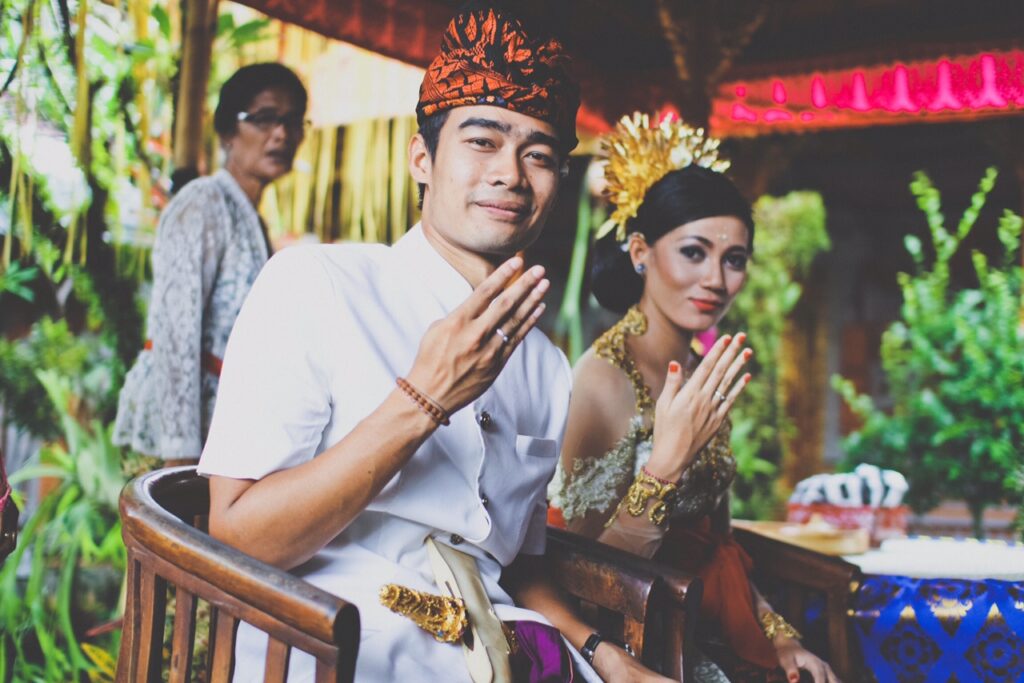
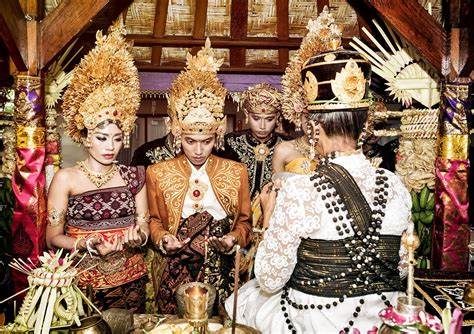
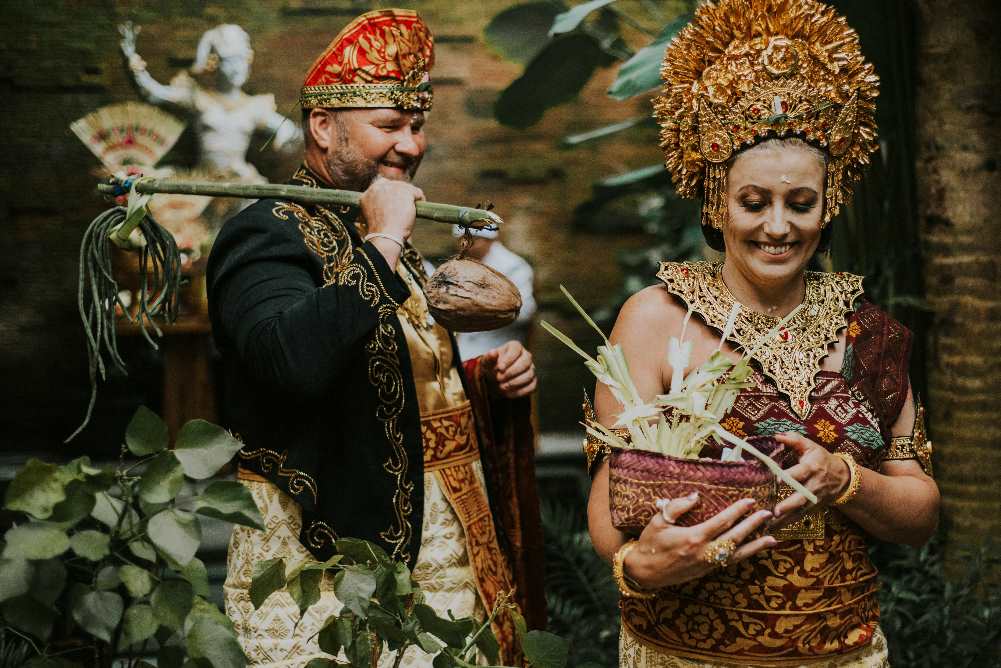
The process of a traditional Balinese Hindu wedding is intricate and steeped in rituals. The ceremony includes multiple stages, each with its own symbolic meaning and religious significance. The wedding process can vary slightly depending on the region, family customs, and caste, but the following elements are commonly included:
a. Ngekeb (Bride’s Preparation)
The wedding preparations begin with the bride undergoing a ngekeb ritual. This ceremony is a purification process where the bride is secluded and bathed with flower-scented water by her family. The purpose of ngekeb is to prepare the bride for marriage by symbolically cleansing her and ensuring she is ready to enter a new phase of life.
The bride is also adorned in traditional wedding attire, which includes intricate balinese jewelry, traditional hairpieces, and an elaborate dress made from woven fabric. The ngekeb ritual is private and takes place in the bride’s family home.
b. Majalan Ceremony (Procession to the Groom’s House)
Once the bride is prepared, the majalan procession begins. The bride, accompanied by her family, makes her way to the groom’s house, symbolizing her transition from her birth family to her new role as a wife in the groom’s family. The groom and his family await the bride’s arrival, and prayers are offered to welcome her.
c. Mewidhi Widana (Blessing Ceremony)
The mewidhi widana is the central religious ceremony of the wedding, conducted by a Hindu priest known as pemangku or pedanda. The priest leads prayers, offers blessings, and recites mantras in front of a pelinggih (family shrine), invoking the gods’ and ancestors’ blessings for the couple. The priest will sprinkle holy water on the couple and their families to purify them and ensure divine protection.
During this ritual, offerings are made to the gods, including flowers, fruit, and rice, which symbolize prosperity, fertility, and a harmonious married life. The couple performs rituals together to demonstrate their unity and commitment to each other, as well as their role in the community.
d. Ngabe Tipat Bantal (The Exchange of Offerings)
Another significant part of the wedding process is the ngabe tipat bantal ceremony, where the bride and groom exchange symbolic offerings made of rice cakes, woven coconut leaves, and other traditional items. This exchange represents the merging of two families and the couple’s commitment to each other. The offerings symbolize fertility and prosperity, wishing the couple a successful and harmonious life together.
e. Ngayab Ceremony (Final Blessings)
In the final stage of the wedding, the couple performs the ngayab ceremony. They wave small ceremonial baskets filled with offerings in front of the family shrine, asking for the ancestors’ blessings and protection. The ngayab is a way for the couple to show respect to the gods and their ancestors, ensuring that their marriage is spiritually supported.
4. Balinese Hindu Wedding Style
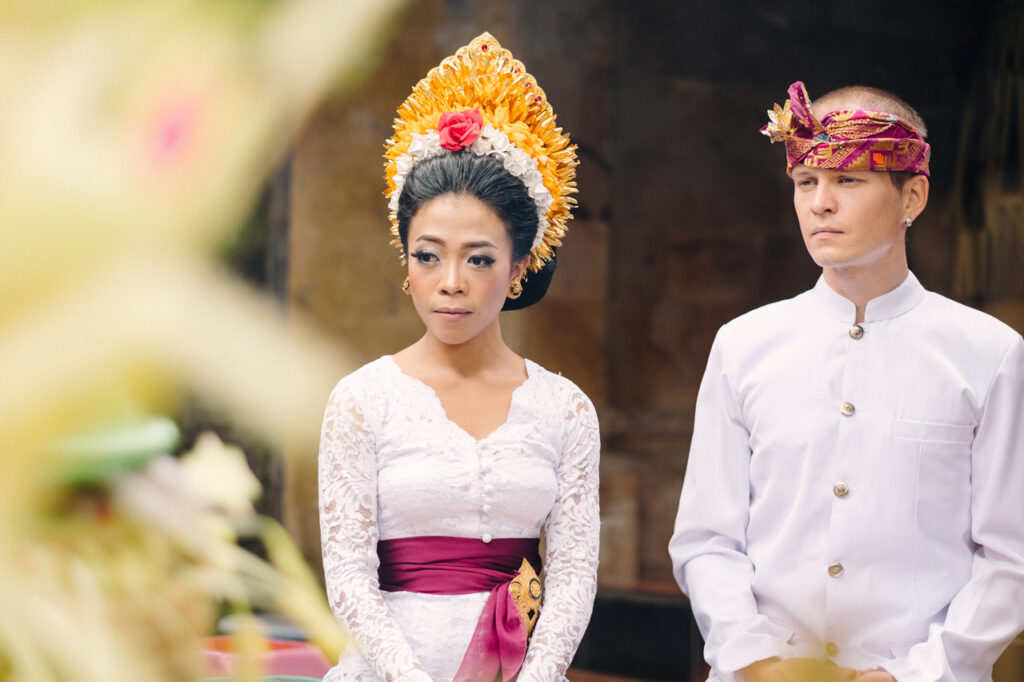
The style of a Balinese Hindu wedding is characterized by the elaborate use of traditional clothing, jewelry, and decorations, which reflect the grandeur and sacredness of the event. The bride and groom are dressed in traditional Balinese attire, which differs from the everyday clothing worn in daily life.
Bridal Attire
The bride’s attire is often the most striking aspect of the wedding style. She wears a kebaya, a traditional Balinese blouse, paired with a sarong or kamen, a length of fabric wrapped around her waist. The fabrics used for a Balinese wedding are typically brightly colored and intricately patterned, symbolizing prosperity and celebration.
The bride’s hair is adorned with golden headpieces, flowers, and other ornaments that represent beauty and elegance. Her jewelry includes golden bracelets, necklaces, and earrings, often passed down through generations, adding sentimental and spiritual value to her ensemble.
Groom’s Attire
The groom’s attire is equally elaborate, consisting of a traditional udeng (a Balinese headdress), a shirt, and a sarong. Like the bride’s, the groom’s clothing is made of luxurious fabrics and adorned with gold or silver accessories. The groom often carries a ceremonial kris (a traditional Balinese dagger), symbolizing his strength and responsibility as a husband.
Decorations and Offerings
The wedding venue, typically the family’s compound or a temple, is decorated with penjor (bamboo poles with hanging decorations), colorful flowers, and traditional offerings. The use of banten (elaborate offerings) is essential in the ceremony, as these offerings are placed on altars to honor the gods, ancestors, and spirits.
5. Balinese Wedding and Different Castes
In Balinese society, the caste system plays a significant role in determining social status, and this influence extends to weddings. There are four primary castes in Bali: Brahmana (priests), Ksatria (warriors), Wesia (merchants), and Sudra (farmers and laborers). Each caste has different traditions and rituals associated with weddings, and the scale and style of the ceremony can vary accordingly.
Brahmana Weddings
The Brahmana caste is the highest caste in Bali, consisting of priests and religious leaders. Brahmana weddings are typically the most elaborate and sacred, with extensive rituals conducted by high priests. The couple often wears white clothing, symbolizing purity and spirituality. These weddings focus heavily on religious rituals and require the presence of senior priests for proper blessings.
Ksatria Weddings
The Ksatria caste, made up of warriors and nobles, is known for its grandeur. Ksatria weddings are often large, community-wide events that emphasize family status and social prestige. The attire worn by the bride and groom is regal, often incorporating gold and elaborate designs. The wedding ceremonies are public affairs, attended by extended families, village members, and guests from surrounding areas.
Wesia and Sudra Weddings
Weddings among the Wesia (merchant) and Sudra (farmer) castes tend to be more modest in scale compared to those of the higher castes. While still maintaining the traditional rituals and customs, these weddings are typically more intimate and centered around family. The clothing worn by the couple may be less elaborate, but the emphasis on
spiritual blessings and community involvement remains strong.
Regardless of caste, the spiritual and cultural significance of a Balinese wedding remains consistent. The differences in the scale and style of the ceremony reflect the diversity within Balinese society, but the core values of family, community, and devotion to the gods are shared across all castes.
Conclusion: A Symbol of Union and Tradition
A Balinese wedding is a deeply symbolic and spiritually significant event that extends far beyond the joining of two individuals. It is a reflection of the island’s culture, Hindu beliefs, and the importance of community and family. Whether large and elaborate or simple and intimate, the Balinese wedding ceremony serves as a sacred ritual that connects the couple to their families, their ancestors, and the divine.
Through the intricate processes, traditional styles, and caste influences, Balinese weddings are a celebration of love, duty, and the continuation of life in harmony with the universe. For those who witness or participate in such a ceremony, it is an unforgettable experience of Bali’s rich cultural heritage and profound spirituality.


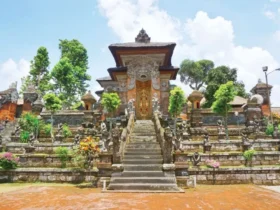



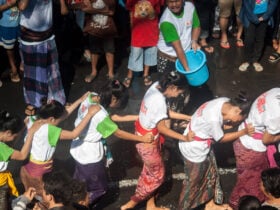
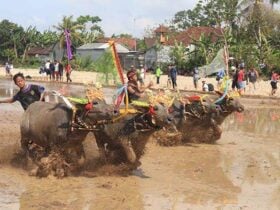

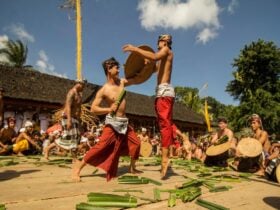
Leave a Review